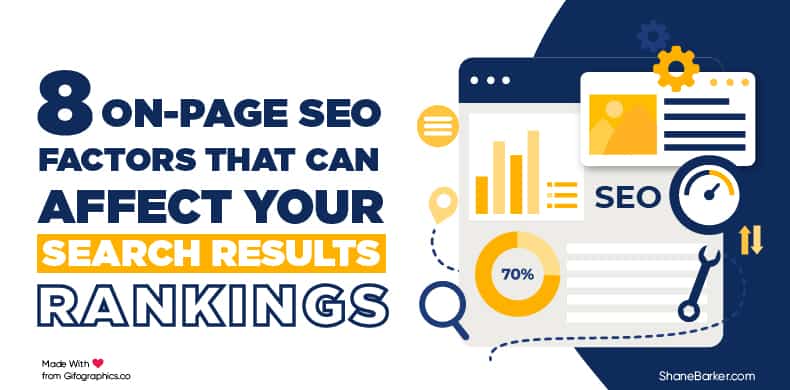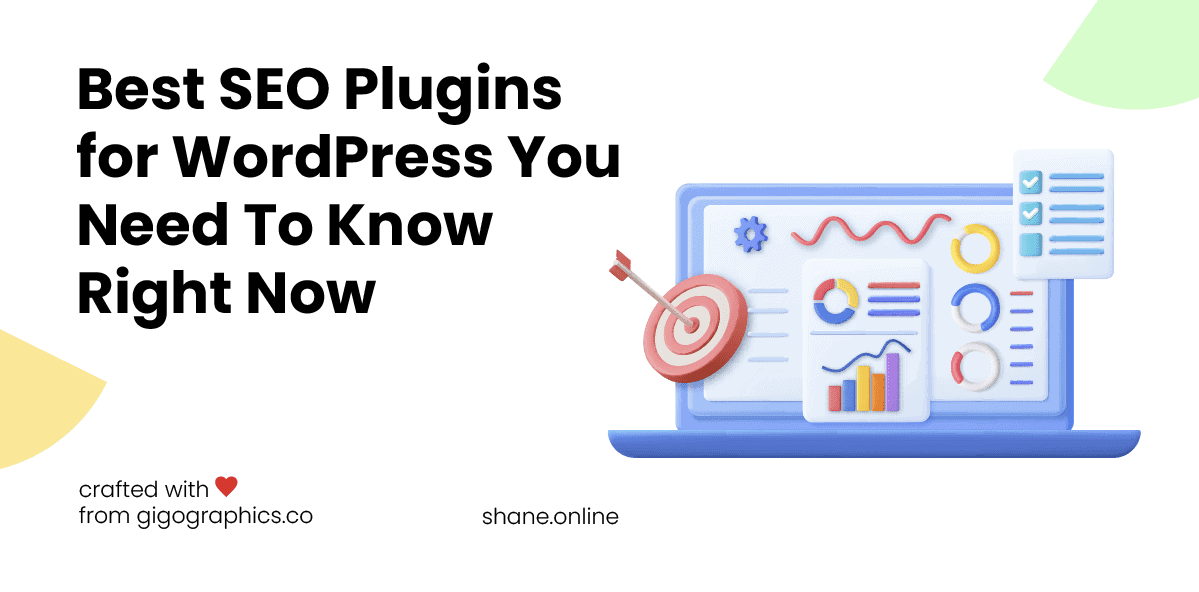Is the URL structure all that important for SEO? Isn’t it pretty insignificant compared to the actual on-page content and shouldn’t I actually focus on creating good content instead?
If that’s what you’re thinking right now, I’ve got news for you.
Your URL structure is one of the first things that users get to see and so, it’s a crucial element of your on-page SEO that you need to keep up to date.
Getting your URL structure right can certainly give you an edge over your competitors and even give your rankings a little boost.
Wondering how?
Let’s take a look at why your URL structure is crucial for your SEO.
=====X=====
Disclosure: Please note that a few of the links in this article are actually affiliate links. This means that if you click on them, I will get a commission, without any extra cost to you. So, feel free to check these out as I only recommend products or services that I personally tested and highly recommend. For more information, please read my affiliate disclosure in my privacy policy.
=====X=====
Table of Contents
How Does SEO URL Structure Work?
To understand how to create an SEO-friendly URL structure, you need to first understand the purpose of URLs.
A URL or Uniforms Resource Locator is used to specific web addresses. It helps users identify and find the documents and resources they’re looking for on the web.
Is that it?
That’s just the basic purpose of URLs. But the way you create your URL structure and URL parameters can change how easy it is for search engines to find web pages.
To create an SEO-friendly URL, you need to optimize the URL structure and use relevant words. If your SEO URL structure is done well, it makes the process of indexing easier.
That’s because your URL structure gives search engines, like Google crawlers, some context about what your web page is about.
Search engines use title tags, content, as well as link anchor text for the same purpose. Search engines combine information from all of these elements to get a better idea about what your page is about.
If you use special characters in your URL, like $, @, *, and others, it becomes difficult for crawlers to understand the real context.
To link words in your URL structure, former Google techie, Matt Cutts, has some advice.
He recommends webmasters use dashes in URLs instead of underscores.
Don’t follow me?
To understand it better, let’s look at an example.
Suppose your URL structure includes something on the lines of “.com/karaoke_bars.” Google’s crawlers would read this as “karokebars.” When you use an underscore, they omit the space between the words.
On the other hand, if you want to include the spaces, you should use a dash. In this example, “.com/karaoke-bars” would be the more appropriate format for the web address.
In another interview, he also revealed the ideal length for your URL on Google. It can be anywhere between 3-5 words. So, it’s clear that a short URL structure is what you should aim for. That’s what works best for Google.
Best Practices for Creating SEO-Friendly URLs
Without further ado, let’s take a look at some of the best practices for creating the perfect URL structure for SEO.
1. Use Keywords in Your URL Structure
To make your URL structure SEO-friendly, you need to use the right keywords. Your URL comes up in web page search results and the presence of the right keywords in it can help you rank better.
How can you search for the right keywords?
You can use tools like Semrush or Moz Keyword Explorer to find relevant keywords that have low competition and high search volumes.
It’s almost impossible to find this combination if you use single-word or two-word keywords. And that’s the reason you should look for long-tail keywords – phrases that your target audience is likely to search for.
A word of caution when you’re trying to incorporate keywords into your URL structure. Avoid keyword stuffing or repetition as this can do you more harm than good.
Just use one or a maximum of two keywords in your URL and try to place them towards the beginning of the URL. Here’s an example where I’ve used my target keyword in the URL structure for an article on my blog web page.
![how to create the perfect seo url structure in [year] 1 use keywords in your url structure](https://shanebarker.com/wp-content/uploads/2019/02/Use-Keywords-in-Your-URL-Structure.png)
2. Migrate to Secure HTTP
On August 1, 2018, Google released a new update to their core algorithm that affected the search rankings of countless websites worldwide.
As a result of this update, Google added a few more parameters that it uses to assess the quality of a web page and its position in searches. These parameters are Expertise, Authoritativeness, and Trustworthiness (E-A-T).
You can clearly see that trust is one of the most important factors when it comes to optimizing your content for searches. And one of the best ways to do this is to use a URL structure that exudes trustworthiness.
So, you should migrate your website to secure HTTP or HTTPS (if you haven’t done so already).
How does this help build trust?
This will ensure that all communication between your users and your website is encrypted and, therefore, safeguarded against malicious attacks. Given the rate at which cybercrimes seem to increase, this is of utmost importance.
The presence of HTTPS in your URL structure will make your visitors more comfortable and they will be more likely to want to check out your site. And of course, it’s an important ranking signal too.
So, if your site engages in financial transactions with your customers online, getting an SSL certificate is a must.
Even if you don’t handle financial transactions online, you should consider getting an SSL certificate as it can help to boost trust.
3. Make Your URL Structure Easy-to-Read
Remember that search engines attach a lot of importance to how people are engaging with a certain web page or content. And to a great extent, this determines how your pages will rank in search results.
So, when you’re looking to make your URL structure SEO-friendly, make it user-friendly first. This means that you should pay special attention to its readability.
How can you achieve that?
For example, a URL such as https://shanebarker.com/blog/url-structure/ is a lot easier to read and more attractive than https://shanebarker.com/blog/1504-2/.
Also, keep in mind that you need to keep your URLs as short as possible for better readability. Shorter URLs can even help you rank better.
In fact, a study by Backlinko found that URLs that were shorter ranked higher in search results.
It’s also a great idea to keep your URL structure as close to the page title as possible.
For example, in the example I used before, you’ll see that the title for my page was, “7 Reasons Why Your Agency Needs to Consider While Label Marketing.” And my URL for that page contains the words “white-label-marketing” in it.
So, how does this help?
It makes sure that users find exactly what they might expect (from your URL) when they land on your page. And that’s one way of delivering a better user experience, which is also an important ranking signal.
4. Avoid Using Stop Words
Stop words are basically words that help to connect the main words in your URL so that they make sense logically and semantically. For example:
- a
- an
- on
- of
- as
- at
- the
For a more comprehensive list of stop words, you can check out this guide by Yoast.
Now, why am I suggesting that you avoid using these stop words in your URL structure?
Because search engines mostly ignore them. So, unless you want to make your URL structure unnecessarily long, I suggest that you drop them altogether.
However, if you think they are needed in order to improve the readability of your URL, you can go ahead and use them.
5. Avoid Creating Dynamic URLs
Dynamic URLs are ones that have URL parameters in them that change while static URLs are always consistent. For example, consider the following URL structures:
URL 1 –
URL 2 –
URL 1 is an example of a static URL while URL 2 is a dynamic one. Now, when it comes to creating a URL structure that is SEO-friendly, always use static URLs.
This is because they’re easier for people to read and understand and so, they can help domain names rank better.
You should also limit the number of folders in your URL structure to a maximum of two. The number of slashes in your URL will denote the number of folders you have.
But, why?
Too many folders can make your URL way too long and they also increase the site depth for both your users as well as for search engines.
Too many folders can make it difficult for search engines to decipher the meaning of your URLs.
6. Exclude Special Characters
You should avoid using special characters like the percentage sign, hash, backslash, tilde, etc. in your URL structure because they can introduce security risks.
To prevent your content from malicious cyber attacks, you should stick to only the safe characters in the list below.
![how to create the perfect seo url structure in [year] 3 exclude special characters url structure](https://shanebarker.com/wp-content/uploads/2019/02/Exclude-Special-Characters-URL-Structure.png)
Also, remember to use hyphens (and not underscores) to separate words in your URL structure.
Why should you care?
This is because Google treats hyphens as separators of words and will, therefore, interpret your URL in the manner you had intended.
On the other hand, it does not read underscores, so the words in your URL will be rendered illegible (imagine a series of words with no spaces in between them).
7. Create an XML Sitemap
Once you have done all of the things mentioned above, don’t forget to submit your XML to Google. This will ensure that your site structure is visible to Google and it can crawl your pages easily.
What’s next?
You can submit your sitemap from your Google Search Console to make sure that all of your pages get indexed properly. This can take you one step closer to achieving a coveted spot in Google search results.
8. Use Canonical Tags
This part of the URL is a bit more technical than the others. When you have two URLs that contain similar content, it can get confusing for Google’s crawlers.
This holds true even when you have the same page linked to more than one URL. In both of these scenarios, you’re diluting your search engine optimization value.
This happens a lot when you have webpages for two versions — one with “http” and one without it. Or if you have a separate secured version that starts with “https.” Whatever the reason is, duplicate content is a strict no-no.
So, what can you do?
You want each URL structure for the web page to be consolidated. This way, you can have one link back for all of the versions. For this, you need to use canonical tags.
In a nutshell, canonical tags can tell Google that a specific URL is like a master copy. You can eliminate the problem of duplicate content with this.
Using a canonical tag, you can indirectly tell Google which URL you want to appear in SERPs.
Canonical tags are necessary because without them, your rankings can split. Suppose you have Page A and Page B that have different search traffic potential.
With canonical tags, you can create a master copy that has a better chance to rank. Even though canonical tags aren’t directly linked to your URL structure, they can affect your Search Engine Optimization.
9. Take Care of Case Sensitivity
Case sensitivity in URLs is something you need to keep in mind. If you’ve got Microsoft or IIS servers, you don’t need to worry. But for those who host with UNIX or Linux, case sensitivity can be an issue.
These servers interpret URLs with different cases separately. For example, shanebarker.com/XyZ is seen differently than shanebarker.com/xYz. They could be seen as different content pages.
So, what must you do?
Ideally, you would want these links to automatically use canonical tags if they have similar content.
But you need to be proactive to make sure you are reaching your Search Engine Optimization potential. You can use htaccess rewrite protocols for this issue.
10. Use a Standard URL structure
We’ve already covered how an XML Sitemap can be beneficial for your SEO strategy.
In a way, this step is related to it as it also touches upon the overall organization of your website. You should create a standard URL structure that you can use for all web pages.
Want to know how?
First, you need to determine which categories and subcategories you want to include. Also, try to understand how you want to write the URLs for each category.
Keep in mind that making too many categories and subcategories can make your URL structure look complicated.
Let me explain this to you with an example. If I am writing an article on tools for SEO, I could use this structure: shanebarker.com/SEO/bestSEOtools.
The categories here are logical and the URL structure is intuitive and makes sense.
On the other hand, “shanebarker.com/strategy/ranking/SEO/tools/best SEO tools” isn’t a good example. It breaks down the structure into minute details which are unnecessary.
You don’t want too many categories in your site. Stick to the main ones to make your site more organized and intuitive.
Ready to Start Creating SEO URL Structures?
Getting your URL structure right is simply one part of the SEO puzzle. However, it’s a significant one nonetheless.
So, focus on the tips mentioned above to create SEO-friendly URLs, but don’t forget to create exceptional content that satisfies user intent as well.
When it comes to Search Engine Optimization, you need to adopt a holistic approach. And that means taking care of both on-page and off-page Search Engine Optimization.
If you’re new to the game, why don’t you start by making sure your URLs are optimized well enough?
Can you think of any other tips to create the perfect SEO-friendly URL structure? Let me know in the comments below.
=====X=====
Disclosure: Please note that a few of the links in this article are actually affiliate links. This means that if you click on them, I will get a commission, without any extra cost to you. So, feel free to check these out as I only recommend products or services that I personally tested and highly recommend. For more information, please read my affiliate disclosure in my privacy policy.



![how to create the perfect seo url structure in [year] 2 make your url structure easy-to-read](https://shanebarker.com/wp-content/uploads/2019/02/Make-Your-URL-Structure-Easy-to-Read.png)


![20 best seo chrome extensions that you need to know in [year] 9 best seo chrome extensions that you need to know](https://shanebarker.com/wp-content/uploads/2021/09/seo-chrome-extensions.jpeg)








Nice information. Keep it up.
Amazing!!
Thank you for this information. Nice Blog.
Thank you so much. I’m glad you liked my post about url structure.
Really informative, thanks for sharing this!
Great blog. Thanks for sharing.
Very nice article, exactly what I was looking for.
Very easy to understand. Thanks for sharing with us 🙂
Great post!
Thanks, Shane! This is a really thorough guide on URL structures. I always seem to forget the canonical tags, so I’m glad you included that point.
I’m so glad I could help. It’s all my pleasure. And yes, canonical tags are really important.
I’ve earn a few excellent stuff here. Definitely price bookmarking for revisiting.
Thank you so much. Keep coming for more such information and let me know what would you like to read about next?